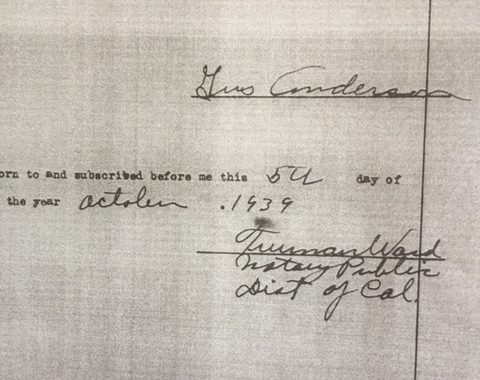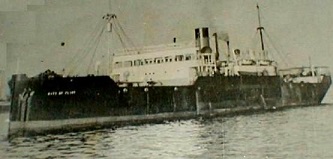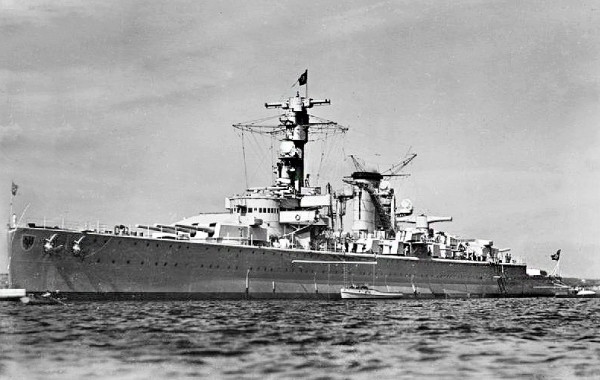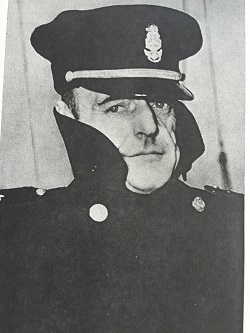The presumed discovery of the British passenger ship Athenia’s wreck site holds the potential to resolve a brief controversy that flared in the wake of the ship’s sinking on Sept. 4, 1939. As noted in an earlier blog, Germany denied that one of its submarines had torpedoed Athenia the evening of Sept. 3, the same day Britain entered World War II.
While the German claim sounded preposterous, the U.S. had declared its neutrality and the strength of popular isolationist sentiment made American officials hesitant to jump to conclusions. In an effort to sort out the cause of the sinking, the U.S. State Department asked surviving American passengers to submit their observations in the form of affidavits explaining exactly what they saw.
The affidavits provided many dramatic and vivid accounts of the explosion that shook Athenia. Most of the American passengers did not see a submarine, but a dozen or more declared they saw its silhouette and a few even said the U-boat fired its deck gun at the ship. One passenger, however, had a perspective different from all the rest and it captured headlines for several days in American, British and German newspapers.
The testimony came from Gustav Anderson, who lived in Evanston, IL, and operated a tour agency. Anderson had taken tours to Europe every summer for many years and had sailed so often aboard Athenia that he was well known to the ship’s officers and several members of the crew.
Under questioning by three members of Congress, Anderson swore under oath that he had spoken to Athenia Chief Officer Barnet Copland, who said the ship was carrying guns and ammunition for Canadian coastal defenses in its holds and added that the ship would be outfitted as an armed merchant cruiser for her return sailing. The fact that Athenia’s decks had been “stiffened” so that she could be converted to an armed cruiser, Anderson said, was common knowledge among the passengers. He also claimed Athenia was ultimately sunk by gunfire from the British destroyers that arrived shortly before sunrise, Sept. 4, to assist rescue operations. Regardless of who was responsible for sinking Athenia, Anderson’s assertions that the ship had been carrying munitions meant that it would have been a legitimate wartime target.
The British government reacted immediately to Anderson’s testimony, categorically denying each of his assertions. Chief Officer Copland filed a sworn statement that, while he was acquainted with Gustav Anderson, he had never spoken to him about the subject of guns being carried in the ship’s hold, and that in fact the ship had carried no munitions whatsoever.
After the story of Anderson’s testimony gained wide circulation in the press beginning in late October 1939, several Athenia survivors came forward to dispute his assertions. In a letter to the New York Times, passenger Cathleen Schurr said she had spent a great deal of time with Anderson aboard the rescue ships Southern Cross and City of Flint, and in all that time she never heard him say anything about there being guns aboard Athenia.
Other passengers offered similar observations in sworn statements, noting Anderson never mentioned the presence of guns even when they specifically discussed the reasons why their ship might have been attacked. None of the passengers heard naval guns firing before Athenia finally sank late in the morning of Sept. 4. They also said they never heard any mention of Athenia’s decks being stiffened, disputing Anderson’s claim that this was “common knowledge” among passengers.
Even City of Flint’s captain, Joseph Gainard, raised questions about Anderson’s veracity. According to Captain Gainard, Anderson claimed he saw the torpedo approaching Athenia and was very anxious to radio a story to the press when he came on board Sept. 4. But a month later, Anderson said in his affidavit that he was in the dining saloon when the torpedo struck.
As City of Flint made its way to Halifax, Nova Scotia, with 236 survivors crowded on board, Gainard blocked Anderson’s efforts to radio his “eye-witness” account of the Athenia disaster to a New York newspaper. The captain gave priority to messages between survivors aboard ship and their loved ones in Glasgow and Galway.
The question remained why Anderson concocted such blatantly false accounts of events? One answer might have to do with his personality. Many persons who knew him or traveled with him described the man as someone who loved being in the spotlight. His exaggerations could be seen as innocent attempts at self-aggrandizement or even as efforts to publicize his travel business.
But his sensational charges may not have been so innocent. Anderson reportedly enjoyed good connections with key German government officials. On board City of Flint he told Captain Gainard that he had done a great deal of espionage work for Idaho Republican Sen. William Borah, an avowed isolationist, although he did not explain the nature of the work. By raising questions about the circumstances under which Athenia was attacked, Anderson’s statements gave cover to the isolationists who wanted the United States to remain neutral, even though Americans lives had been lost. Ultimately America stayed out of the conflict for two more years until the Japanese surprise attack on Pearl Harbor.









